#qedeshet
Explore tagged Tumblr posts
Text
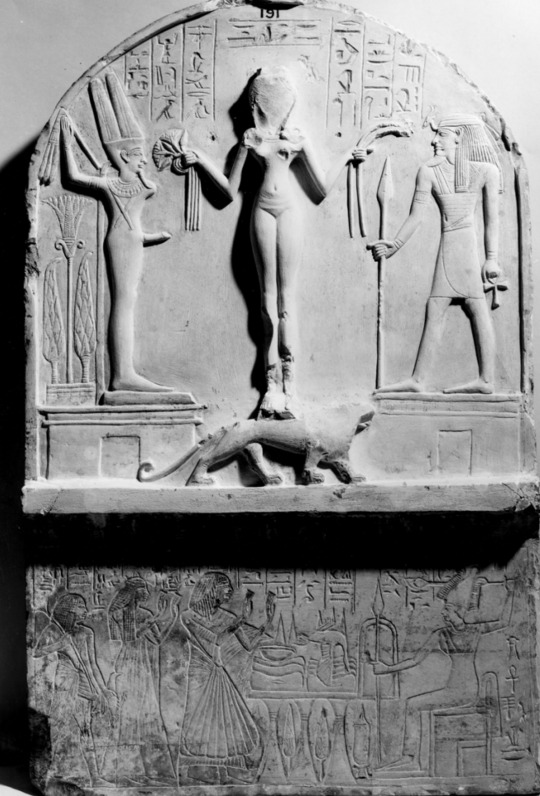
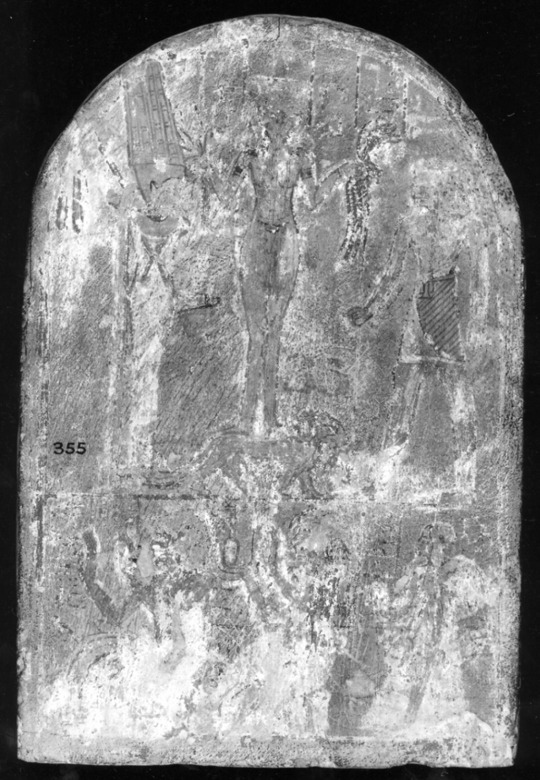
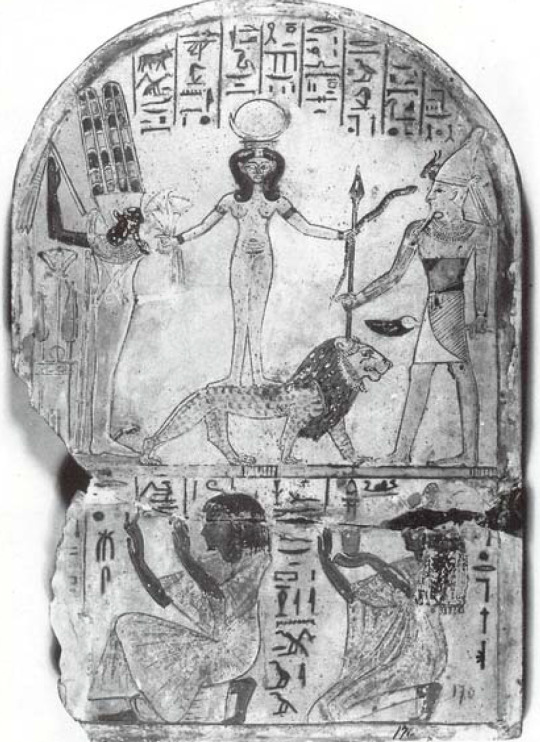
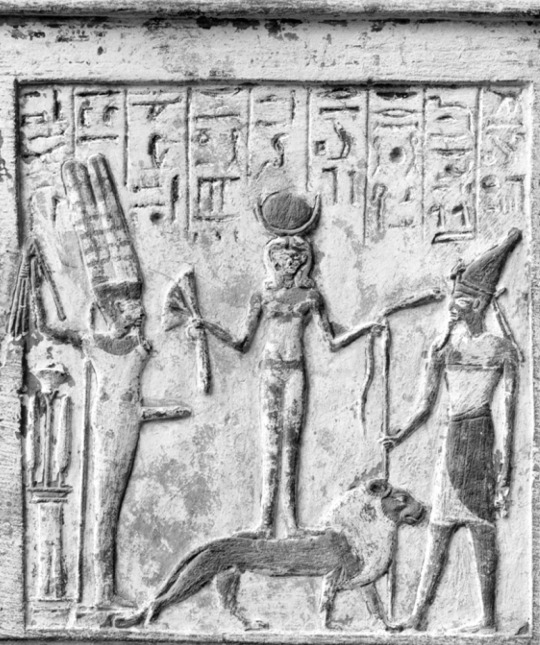
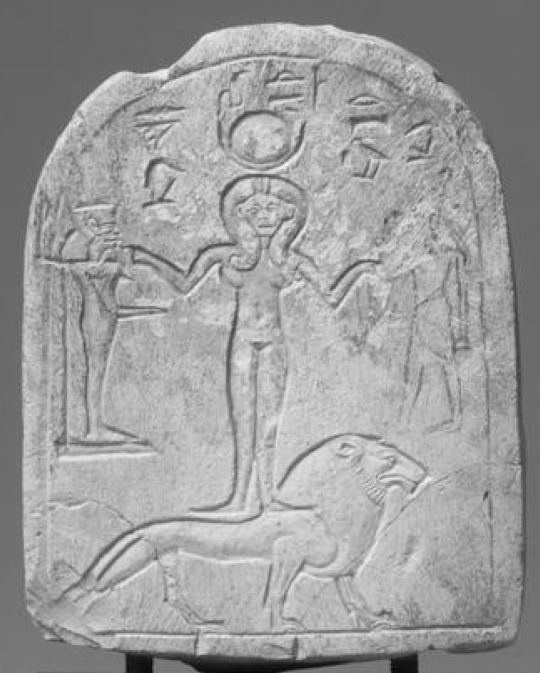

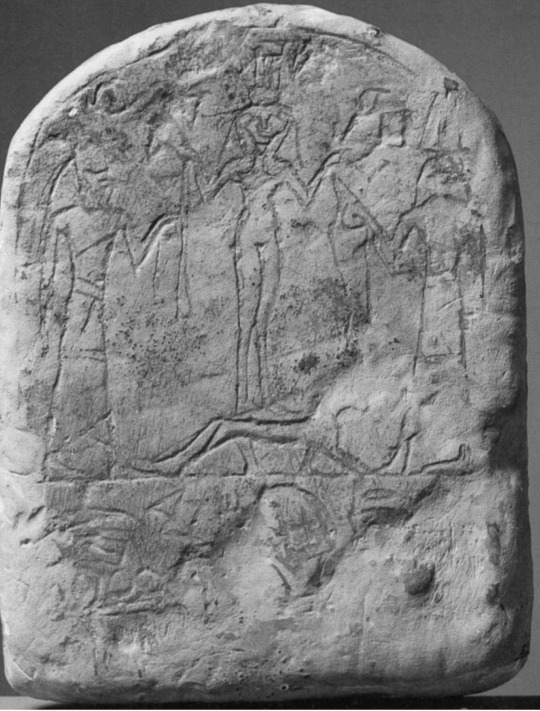
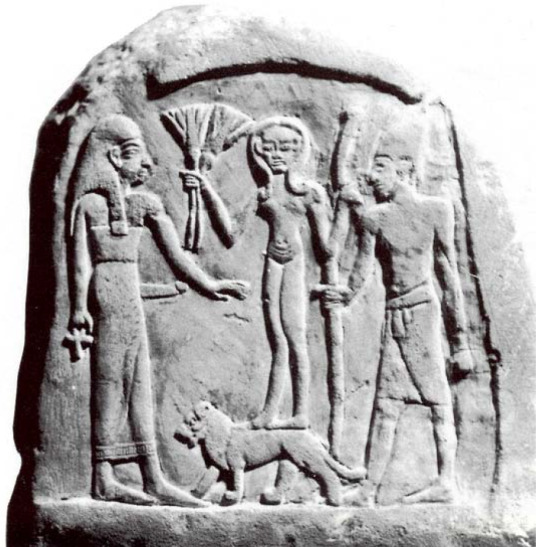
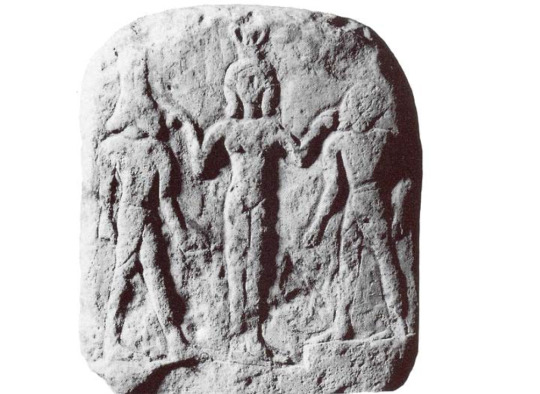
Qetesh flanked by Min and Resheph Provenance Unknown, Egypt c. 1300 BCE? Source: The Many Faces of the Goddess by Izak Cornelius, 2008 "Qedeshet" Goddess, Anat? Ashtart? Previously thought to depict Asherah / Ashirat but this is nowadays considered unfounded.
#qetesh#qedeshet#ashirat#asherah#astarte#ashtart#anat#goddess#egypt#egyptian gods#canaan#canaanite gods#phoenicia#phoenician gods#aram#aramean gods#syria#syrian gods#levantine gods#mesopotamia#mesopotamian gods#pagan gods#polytheism#archeology#magic#witchcraft#witchblr#paganblr#occult
223 notes
·
View notes
Note
Know any Resources for Astarte.
The best starting point is Aren M. Wilson-Wright’s Athtart. The Transmission and Transformation of a Goddess in the Late Bronze Age (though note minor criticism courtesy of Timothy D. Leonard in Ištar in Ḫatti: The Disambiguation of Šavoška and Associated Deities in Hittite Scribal Practice). Sadly, warnings from Jo Ann Hackett’s piece published all the way back in 1989 remain relevant, as Wilson-Wright aptly demonstrates. Other than that, in no particular order:
Gaby Abousamra and André Lemaire, Astarte in Tyre According to New Iron Age Funerary Stelae
Spencer L. Allen, The Splintered Divine
Elizabeth Bloch-Smith, Archaeological and Inscriptional Evidence for Phoenician Astarte
Izak Cornelius, The Many Faces of the Goddess: The Iconography of the Syro-Palestinian Goddesses Anat, Astarte, Qedeshet, and Asherah c. 1500-1000 BCE
James K. Hoffmeier and Kenneth A. Kitchen, Reshep and Astarte in North Sinai: a Recently Discovered Stela from Tell El-Borg
Theodore J. Lewis, ʿAthtartu’s Incantations and the Use of Divine Names as Weapons
Rüdiger Schmitt, Astarte, Mistress of Horses, Lady of the Chariot: The Warrior Aspect of Astarte
Mark S. Smith, ‛Athtart in Late Bronze Age Syrian Texts
Anna E. Zernecke, The Lady of the Titles: The Lady of Byblos and the Search for her "True Name" (strictly speaking an article about where Astarte does -not- actually appear)
Christiane Zivie-Coche, Foreign Deities in Egypt (UCLA Encyclopedia of Egyptology entry)
7 notes
·
View notes
Text

Asherah/Qudshu em estela egípcia - ela é retratada como a figura central nesta estela egípcia datada de aproximadamente 1300-1200 AEC. De pé sobre seu leão característico, ela é coroada com um disco solar e um cocar com chifre de lua crescente. Seus braços estendidos seguram uma cobra/serpente e uma flor de lótus. A inscrição frontal identifica Asherah como “Qudshu, Senhora do Céu/Rainha do Céu��� e “Senhora de Todos os Deuses”. Esses dois títulos são repetidos no verso, com os epítetos adicionais de “Senhora das Duas Terras”, Filha de Rá“, Amada de Rá” e “Olho Udjat de Atum”. Asherah/ Qudshu é ladeada pelo Deus egípcio Min (à esquerda). De pé em um pedestal elevado, um Min ereto é coroado com plumas gêmeas e segura um mangual erguido. Min era um Deus pré-dinástico da fertilidade, do poder e do deserto oriental. Reflexo do alto nível de síntese e fluidez entre as religiões antigas, o Deus à direita carrega um símbolo religioso egípcio, o ankh, mas na verdade não é egípcio. Ele é o Deus siro-palestino do trovão e da guerra, Resheph. Os hieróglifos egípcios: kšt, kdš, kdst e kdšt, que identificam a Deusa nessa iconografia, foram traduzidos como Qdš, Qdšt, Qudsh, Qudšu, Qadesh, Qadishtu, Qadosh, Qedesh, Qedeshet, Qetesh, Qodesh, Quatesh, Qudsha, Qudshu, Kadesh, Ke(d)eshet, Kenet e como epíteto de Asherah.
Saiba mais no Curso “Asherah: Deusa de Israel” – para uma luta anticolonial
Para informações e inscrição: https://angelanatel.wordpress.com/2022/04/06/curso-asherah-deusa-de-israel/
2 notes
·
View notes
Note
i'm actually gonna update this with some stuff i'm reading or planning in reading! lots of thick academia type stuff and focusing on anat. if theres an issue with the link embeds let me know!
currently reading:
The goddess Anat: an examination of the textual and iconographic evidence from the second millennium B.C. Lloyd, Jefferey Brian, 1994.
to-read:
The Many Faces of the Goddess: The Iconography of the Syro-Palestinian Goddesses Anat, Astarte, Qedeshet, and Asherah c. 1500-1000 BCE. Izak (Sakkie) Cornelius, 2008
Burgh, Theodore W. “Asherah: Everyone’s Favorite Girl.” In Pursuit of Visibility: Essays in Archaeology, Ethnography, and Text in Honor of Beth Alpert Nakhai, edited by Jennie Ebeling and Laura Mazow, Archaeopress, 2022, pp. 145–56. JSTOR
still trying to get my hands on a translation/analysis of the Baal Cycle that isnt literally 300 dollars
Do you have some good recommendations on learning about the Canaanite deites?
Hi there!
This may not be a satisfying answer and, trust me, I'm right with you. Like all* pantheons there is no strict 'canon' but I'd say the things to understand the very basics would be The Baal Cycle and the Epic of Aqhat. Both are incomplete texts and the tablets are not in any known order so it's difficult to decipher them. Other than that, there's not really much. Each translation has its own issues (I'm personally not a fan of those that translate Anat's epithet of 'virgin' into 'adolescent' and anything else suggesting a goddess of sexual fertility would be a prepubescent child) and any other supplementary information I would use my own judgement to be judicial about. Also, due to regional and religious politics, you have to be quite judicial about what sources and opinions you put stock in. For instance, I personally wouldn't give a shit about what the Old Testament and Philo of Byblos have to say abt the Canaanites and their gods because any sources resulting from them have political incentive to slander and badmouth. Any other secondary or tertiary source or blog post has to be taken with quite the large grain of salt, as the Canaanites have a bad habit of being used for chauvinist or nationalist rhetoric. I myself am Palestinian and Muslim so I have my own biases, it's just good to stay aware of what baggage people are bringing into something like this.
Another good place to start would be the Egyptian city of Avaris/Awaris and the Hyksos Dynasty of the Second Intermediate Period. I just finished a loooong final essay about the xenophobia politic surrounding them HOWEVER it seems that "eastern" religion had been established in Egypt long before and continued long after the SEP. My favorite fun fact about this is that Ramesses ii named his first daughter Bint-Anat (Daughter of Anat) and depicted himself as married to Anat so theres bound to be a but about the pantheon immortalized there.
Best of luck and happy reading!
119 notes
·
View notes
Note
J, Francis!
An Hendy Hap
(Francis + When Words Aren’t Enough)
Francis Crawford lay still in the still darkness, caught between breath and breathlessness, between the fading phantoms of sleep and the hushed wonder of the waking world. Every tender and well-used muscle vibrated with fine tension like the strings of a harpsichord on the brink of some grand and terrible work, but he permitted neither sound nor motion to disturb the exhausted slumber of the figure curled next to him, nor yet the great chord of joy resounding through and through him without beginning or end. Beyond the rain-darkened panes of the casement window, the full moon scowled through scudding clouds at the vale of the Tyne and the rising wind lashed the leafless trees into woodcut phantoms against the veil of night. But here there was only that waiting calm, not serenity, nor yet an end, but a beginning almost within reach, a beginning come now beyond the death of hope, beyond battle and grief and long despair.
In the night-darkness of the room, keen blue eyes like spilled drops of deeper night picked out the dim lines of tester and cabinet, passing over the pale blur of discarded doublet and kirtle and the frothing spill of tangled linens, and settling on the faint, quicksilver traces of drying tears on the pale cheek resting so close to his own.
Love is to his herte gon, with one spere so kene.
Dizziness greater than any swooning opium dream overcame him and he felt the breath catch in his throat as he spun like a barque without rudder or oars on a tide of words that would never suffice. Philippa’s hair twined like waterweed around him, the vast and terrible possibilities of touch at last, at last rose up about him like the towering waves consuming Cantref y Gwaelod, and he was drowning in astonished delight as, finally, he allowed one scarred, elegant hand to trace the sweet curve of shoulder and breast. Philippa stirred in her sleep and murmured, and he felt the softness and warmth of her skin slip against his own and the aching wonderment of his own response.
‘Qedeshet, Mistress of all the Gods, Eye of Ra, who has none like her. Come and let us beget all kinds of living things.’
10 notes
·
View notes
Photo

Egyptian Lotus Wine
Never let it be said that the ancient Egyptians didn't know how to get down. Not only were they enthusiasts of traditional party drugs like alcohol, cocaine, and marijuana, but they also had their own unique concoction that made for some epic Nile-side all-nighters.
Blue water lilies (aka lotuses) had an important place in ancient Egyptian culture; they were used for their medicinal qualities, as a perfume, a sacred decoration, and they were seen as symbols of the gods Nefertem, Qedeshet, and Ra. Also, they were turned into ecstasy wine and used as orgy fuel. When lotuses are soaked in wine they change chemically, infusing the brew with aporphine and nuciferine and giving it an effect "much like cannabis, codeine or propoxyphene; maybe a little hallucinatory (at higher doses)."
The hypnotic concoction has been compared to MDMA and can also have a Viagra-like effect on men due to its effects on the circulatory system. These qualities, combined with the flower's sweet scent and sacred place in Egyptian society, made blue water lilies a favorite staple of fertility rituals. The Turin Papyrus depicts the women in these celebrations of sexuality as wearing very little aside from lotus headdresses (which may have had its own Viagra-like effect). No wonder Odysseus got stuck on that island for so long.
0 notes
Text
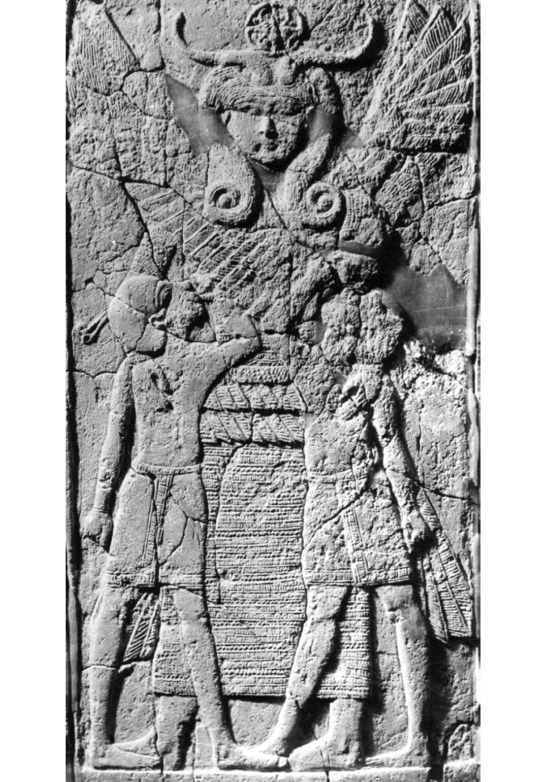
Ivory of a Winged Horned Goddess suckling two boys/kings Ugarit, Syria c. 1200 BCE Source: The Many Faces of the Goddess by Izak Cornelius, 2008
Anat? Ashtart? Ashirat? Shapash? Original is unidentified with no inscription. Anat has been described as a suckling goddess. See Cornelius for further discussion.
#qedeshet#ashirat#asherah#astarte#ashtart#anat#goddess#egypt#egyptian gods#canaan#canaanite gods#phoenicia#phoenician gods#aram#aramean gods#syria#syrian gods#levantine gods#mesopotamia#mesopotamian gods#pagan gods#polytheism#archeology#magic#witchcraft#witchblr#paganblr#occult#suckling#mother goddess
124 notes
·
View notes
Text

Qetesh-type Goddess adored by Female Votary Provenance Unknown, Egypt c. 1300 BCE? Source: The Many Faces of the Goddess by Izak Cornelius, 2008
"Qetesh" Goddess, Anat? Ashtart? Previously thought to depict Asherah / Ashirat but this is nowadays considered unfounded. Accompanied by degraded inscription which may read “Lady of Heaven, Mistress of all the Gods”.
#qedeshet#qetesh#ashirat#asherah#astarte#ashtart#anat#goddess#egypt#egyptian gods#canaan#canaanite gods#phoenicia#phoenician gods#aram#aramean gods#syria#syrian gods#levantine gods#mesopotamia#mesopotamian gods#pagan gods#polytheism#archeology#magic#witchcraft#witchblr#paganblr#occult
21 notes
·
View notes
Text

Qetesh-type Goddess holding flowers standing on crescent and stars Ugarit, Syria c. 1200 BCE Source: The Many Faces of the Goddess by Izak Cornelius, 2008
#qedeshet#qetesh#ashirat#asherah#astarte#ashtart#anat#goddess#egypt#egyptian gods#canaan#canaanite gods#phoenicia#phoenician gods#aram#aramean gods#syria#syrian gods#levantine gods#mesopotamia#mesopotamian gods#pagan gods#polytheism#archeology#magic#witchcraft#witchblr#paganblr#occult
13 notes
·
View notes
Text

Qetesh-type goddess (relief on back of image of Ramses II) Unknown provenance, Egypt c. 1300 BCE Source: The Many Faces of the Goddess by Izak Cornelius, 2008
#qedeshet#qetesh#ashirat#asherah#astarte#ashtart#anat#goddess#egypt#egyptian gods#canaan#canaanite gods#phoenicia#phoenician gods#aram#aramean gods#syria#syrian gods#levantine gods#mesopotamia#mesopotamian gods#pagan gods#polytheism#archeology#magic#witchcraft#witchblr#paganblr#occult
14 notes
·
View notes
Text

Gold pendant of Qetesh-type Goddess Ulu Burun, Turkey c. 1318 BCE Source: The Many Faces of the Goddess by Izak Cornelius, 2008
Found in shipwreck off the coast, close to Rhodes. Currently cataloged as Ulu Burun KW 703 (Bodrum Museum of Underwater Archaeology).
#qedeshet#qetesh#ashirat#asherah#astarte#ashtart#anat#goddess#egypt#egyptian gods#canaan#canaanite gods#phoenicia#phoenician gods#aram#aramean gods#syria#syrian gods#levantine gods#mesopotamia#mesopotamian gods#pagan gods#polytheism#archeology#magic#witchcraft#witchblr#paganblr#occult
11 notes
·
View notes
Text


Gold pendants of Qetesh-type Goddess Ugarit, Syria c. 1200 BCE Source: The Many Faces of the Goddess by Izak Cornelius, 2008 Left depiction holds two rams by the feet, flanked by lotuses. The right depiction holds lotus and papyrus plants, with star discs to one side.
#qedeshet#qetesh#ashirat#asherah#astarte#ashtart#anat#goddess#egypt#egyptian gods#canaan#canaanite gods#phoenicia#phoenician gods#aram#aramean gods#syria#syrian gods#levantine gods#mesopotamia#mesopotamian gods#pagan gods#polytheism#archeology#magic#witchcraft#witchblr#paganblr#occult
14 notes
·
View notes
Text

Two Qetesh-type Goddesses standing on lion Nahal Barkai, Palestine / Tel Harasim, Israel c. 1200 BCE Source: The Many Faces of the Goddess by Izak Cornelius, 2008
#qedeshet#qetesh#ashirat#asherah#astarte#ashtart#anat#goddess#egypt#egyptian gods#canaan#canaanite gods#phoenicia#phoenician gods#aram#aramean gods#syria#syrian gods#levantine gods#mesopotamia#mesopotamian gods#pagan gods#polytheism#archeology#magic#witchcraft#witchblr#paganblr#occult
13 notes
·
View notes
Text

Drawing of limestone relief of Qetesh-type Goddess Ihnasia el-Medina, Egypt c. 1250 BCE? Source: The Many Faces of the Goddess by Izak Cornelius, 2008
"Qetesh" Goddess, Anat? Ashtart? Previously thought to depict Asherah / Ashirat but this is nowadays considered unfounded.
#qedeshet#qetesh#ashirat#asherah#astarte#ashtart#anat#goddess#egypt#egyptian gods#canaan#canaanite gods#phoenicia#phoenician gods#aram#aramean gods#syria#syrian gods#levantine gods#mesopotamia#mesopotamian gods#pagan gods#polytheism#archeology#magic#witchcraft#witchblr#paganblr#occult
19 notes
·
View notes
Text

Qetesh-type Goddess Memphis?, Egypt c. 1250 BCE Source: The Many Faces of the Goddess by Izak Cornelius, 2008
"Qetesh" Goddess, Anat? Ashtart? Previously thought to depict Asherah / Ashirat but this is nowadays considered unfounded.
#qedeshet#qetesh#ashirat#asherah#astarte#ashtart#anat#goddess#egypt#egyptian gods#canaan#canaanite gods#phoenicia#phoenician gods#aram#aramean gods#syria#syrian gods#levantine gods#mesopotamia#mesopotamian gods#pagan gods#polytheism#archeology#magic#witchcraft#witchblr#paganblr#occult
16 notes
·
View notes
Text

Pendant of Qetesh-goddess, Unknown provenance. (Currently, National Archaeological Museum Athens 944 )

Golden Pendant of Qetesh-goddess Ugarit, Syria c. 1300 BCE

Gold Leaf Pendant of Qetesh-goddess Ugarit, Syria c. 1300 BCE

Bronze Applique Plaque of Qetesh-goddess Tomb from Akko / Acre, Israel c. 1300 BCE Source: The Many Faces of the Goddess by Izak Cornelius, 2008
#qedeshet#qetesh#ashirat#asherah#astarte#ashtart#anat#goddess#egypt#egyptian gods#canaan#canaanite gods#phoenicia#phoenician gods#aram#aramean gods#syria#syrian gods#levantine gods#mesopotamia#mesopotamian gods#pagan gods#polytheism#archeology#magic#witchcraft#witchblr#paganblr#occult
11 notes
·
View notes